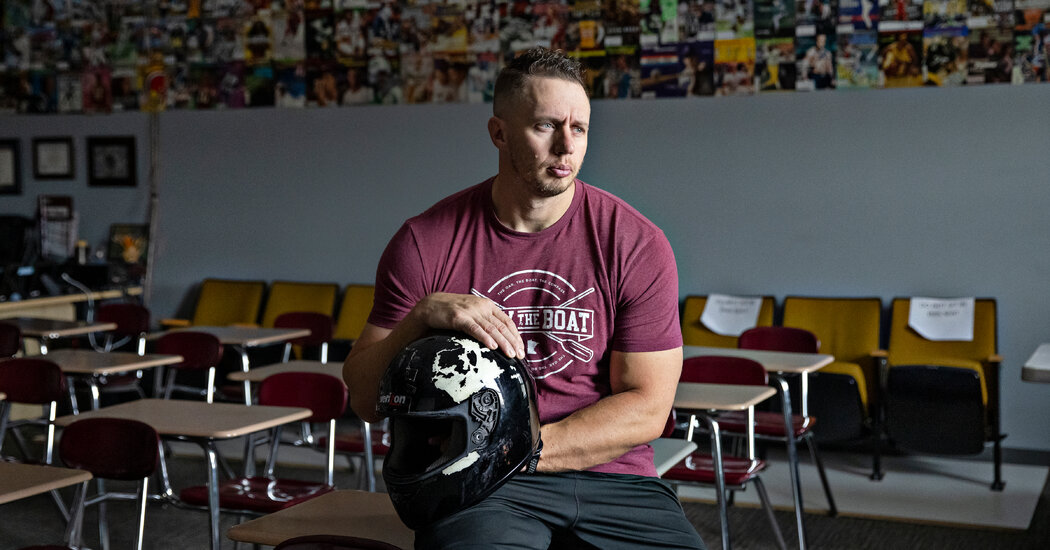
“It’s a fascinating thing,” the doctor said. “A young brain is just so much better at healing.”
A week after his crash, Sisson and his mother flew back to Salt Lake City, the host city for the 2002 Winter Olympics, on a special medical jet. He checked into the brain rehabilitation unit of the L.D.S. Hospital, where Dr. Andrew Dodds, the attending physician, took over his care.
In those first days, Sisson was confused about where he was. His eyes and facial expression had the flat affect of someone who is there but not really there. He struggled with memory and balance. He tired easily. Noise and bright lights overstimulated and agitated him, though Misti Timpson, a physical therapist who helped with his rehab, said he never lashed out the way brain injury patients often do.
“He was the nicest agitated person I have ever met,” Timpson said. “He would say: ‘Excuse me, ladies, I am getting agitated. I suggest you step away.’ And only then would he scream or strike out or cover himself with a blanket.”
After a little more than a week, Dodds cleared him to attend an Olympic medal ceremony in Salt Lake City with an aide.
Bell was there. Sisson has a photo of the two of them embracing that night, though he has no memory of the moment.
After another week, Sisson had improved enough to go home, though doctors monitored him for a year, slowly clearing him to use knives and kitchen appliances, then to drive and enroll in some college classes that did not involve math or languages or much memorization.
“I’m convinced that Joe was saved because he was 21 and didn’t have the cumulative trauma from sliding injuries that his friend probably had,” Dodds said.


More Stories
Saudi Stable’s Triumphs Abroad: Fahd Al-Sayari’s Journey of Success in International Horse Racing
Watch: Ronaldo unveiled by Al Nassr
BCCI invites bids to operate women’s IPL teams